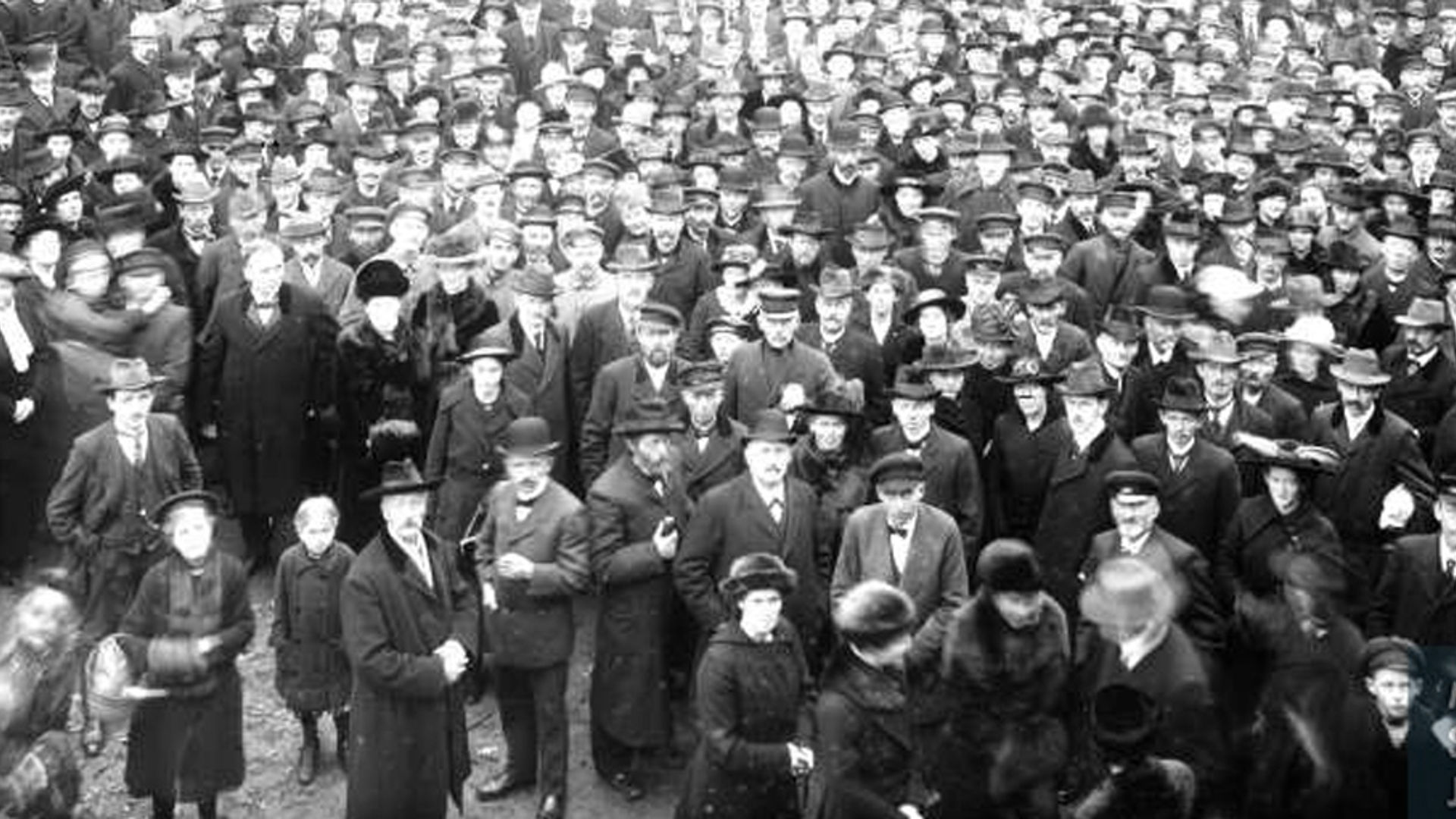Interviews with people near and dear to participants in the historic Aabenraa gathering on 17 November 1918
Listen (in Danish) to stories about some of the 3,000 people who gathered in front of Folkehjem in 1918 to hear the Danish-minded politician H.P. Hanssen’s speech – a crucial declaration in the struggle to see Southern Jutland reunited with Denmark.

The town of Aabenraa is home to the Danish-style community house Folkehjem, ”the people’s home”. It was founded in 1900 by Sprogforeningen, “the Language Society”, as a place where Danish-minded North Schleswegians – who called themselves “Southern Jutlanders” – could meet and speak Danish among themselves. At that time Aabenraa was German territory, and the law forbade members of the Danish minority to speak Danish at public gatherings. Obviously, it was also easier to arrange communal activities in a forsamlingshus, literally a “gathering house”, modelled on the Danish tradition of community houses – which are still found in many Danish villages today. In 1918, Folkehjem had a small park in front of it.
In 1918 the Great War (which we know as World War I) was in its final stages, but it had cost more than 5,000 North Schleswegian men and boys their lives, as they had been obliged to fight in the German army. The Language Society had been working long and hard to arrange a referendum for the Danish minority in this part of northern Germany, which would enable them to vote on which country they wanted their part of the region to belong to: Denmark or Germany.
On 17 November 1918, the Language Society had convened a meeting of its members, along with local Danish electoral associations from the whole North Schleswig region. During their meeting, held in Kongesalen, the “Royal Reception Hall” at Folkehjem, the Danish-minded politician H.P. Hanssen presented what soon became known as the Aabenraa Resolution. This paper declared that it was, indeed, possible to organize and hold a referendum in North Schleswig. But there was one problem about the meeting as a way to get the message across: the Royal Reception Hall and all others rooms in the Folkehjem building were full to bursting point.
And that was not all. In the grounds outside Folkehjem some 3,000 people had gathered, impatient to hear the wording of the Resolution. H.P. Hanssen, a seasoned politician, had no problem addressing a large audience. Unflustered, he stepped out onto the balcony of Folkehjem and read the entire declaration out loud to the crowd – in Danish.
Today, Genforeningsparken or “Reunification Park” is located in the very spot where the crowd gathered that day. The footprints in the flagstones around the park are reminders of these people. Some footprints have a name next to them. These indicate a specific person we recognize on the photograph taken that day from the Folkehjem balcony. Descendants and people who knew these individuals have shared the stories passed down to them by their parents, grandparents or mentors. You can either listen to the actual interviews (in Danish) with the people one step away from eye-witnesses to the 1918 events, or you can hear brief, dramatized accounts (also in Danish) based on the contents of the interviews.
To learn more about the region’s history, the referendum and the people behind the Footprint Stories, click on one of the names below. (Note: All audio files are in Danish.)
Nine footprints, nine stories
Footprint Stories is a collaborative audio project that involves Aabenraa Municipality, the creative production company Sans-1, the Teatret Møllen theatre, and Museum Sønderjylland (the Museum of South Jutland).
The interviews with the footprint characters’ descendants and friends were conducted and audio-produced in 2019 by the Museum of South Jutland on behalf of Aabenraa Municipality.
We at Aabenraa Municipality would like to express our gratitude to everyone who has contributed to this audio heritage collection by sharing the stories of their family members and friends.


